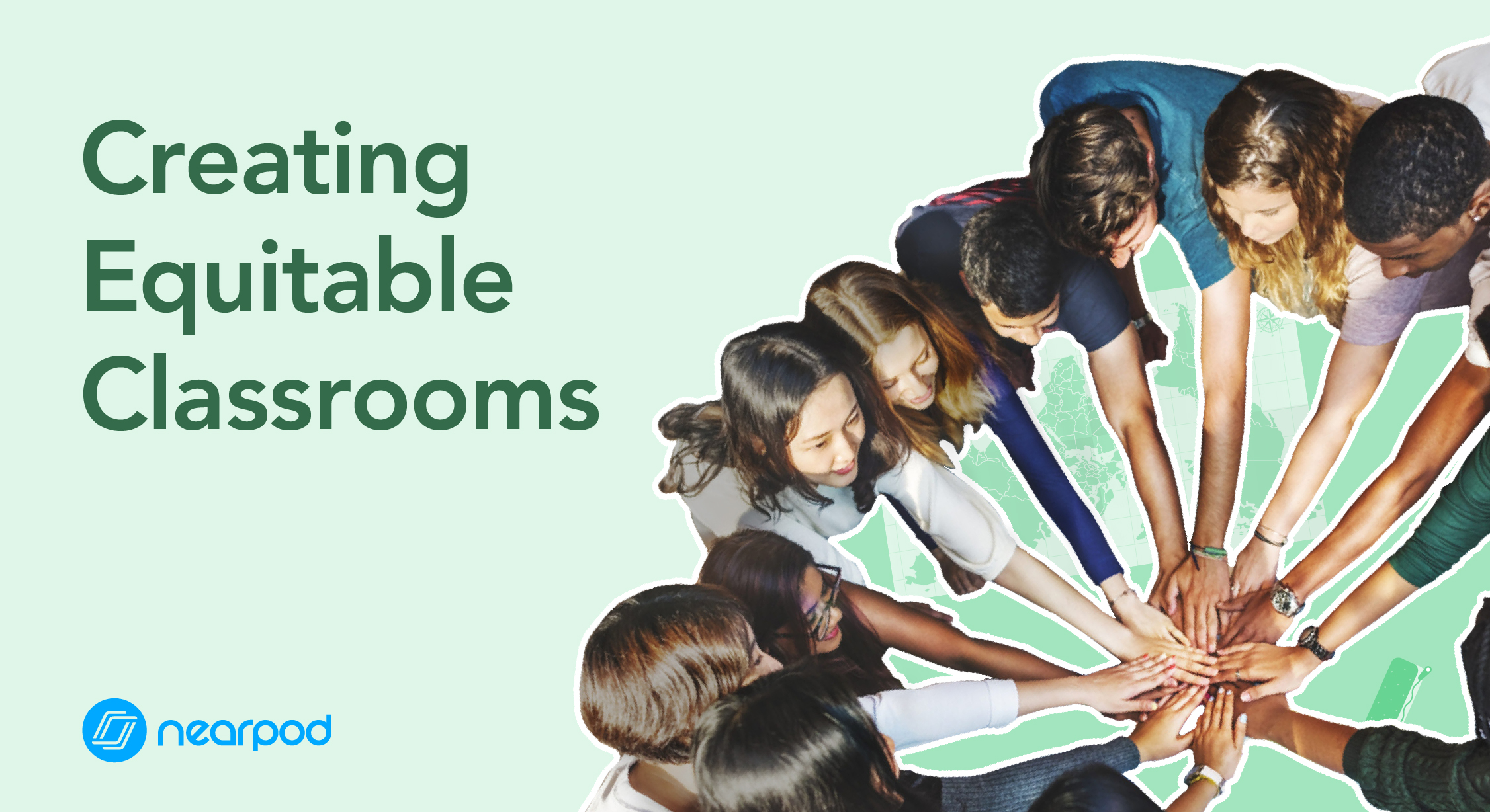
Creating Equitable Classrooms: 7 Steps Towards Equity
What does equity look like in your classroom? As educators, our responsibilities span far beyond the depths of academics. I’m sure you often refer to your students as your ‘kids’ and we should recognize the magnitude of that label. It is important that we are cognizant of the significant role we play in our classroom. If we are dedicated to the success of every student, it is important to recognize that there is, at times, an uneven playing field. Students may face unfair prejudices about their capabilities or barriers to success due to their cognitive or physical ability, economic status, race or ethnicity, gender, or any other number of factors- the list goes on.

At Nearpod, we have recognized that it is critical to move towards an equitable classroom environment, one that ensures that all students can be successful and celebrates students’ unique qualities. We also recognize that with all the requirements teachers are faced with, this can be a daunting task. With the help of technology, we will begin to produce 21st century-classrooms that are inclusive to everyone by bringing in social and emotional learning in schools. These will help in elevating student voice, closing the opportunity gap, and providing equal access to opportunities.
7 steps towards equity:
1. Lay a Foundation
The first step towards equity is creating the environment for which it lives in and in this case, it’s your classroom. Establish a foundation of inclusion and respect for diversity that shapes your interactions with others.
For example, when students come back after the Easter weekend, ask if anyone did anything special on their day off; rather than asking if everyone had a nice Easter. With asking these types of generalized questions, we allow for an inclusive, equitable environment to grow. Students who celebrated Easter may detail their holiday events; however, those who did not celebrate, still have an opportunity to participate in conversations.
2. Empower Critical Thinking
As their teacher, we have limited control over the content they are exposed to through their classroom textbook or state-provided resources; however, we do possess the ability to help our students analyze biases and gaps. With critical thinking, we are allowing our students to actively participate in their learning process, rather than be passive, which supports a culturally equitable classroom environment. Students share their deep reasonings and understandings with classmates to bridge cultural horizons and ensure all perspectives are heeded.
3. Highlight Culturally Relevant Teaching
Relevance ties to the emotional part of learning;
– How much do they care about what they’re learning?
– How invested are they?
We all work harder and learn deeper when we have a passion and relevance for what we’re learning. Allow students to see themselves in history; through trials, tribulations, and most importantly, the triumphs. Each stage is bridging the gap and creating an equitable and inclusive environment for all students to learn.
4. Provide Community Involvement
Incorporating family and community knowledge enhances the student’s learning experience. With basic knowledge on career paths and clusters, students can start to piece together the purpose behind their learning. Unfortunately, identifying career paths early on is either inaccessible or not a priority for some. Many students only have exposure to careers that exist in their immediate community; this way, increasing inequity. The more we can incorporate the community and family into our classrooms, through; guest speakers, career days, field trips, etc., the more we can provide equal access for all our students.
5. Purposeful Planning
Planning your lessons to promote an equitable classroom can seem like an intimidating task. But with the help of social and emotional learning activities, it doesn’t have to be. Students respond differently to different types of content, whether due to culture, socialization, or learning preference. With intentional planning we can ensure that every students’ needs are valued and objectively met.
Think about delivering different forms of content through learning stations. At each station, provide students with a range of materials to access their learning. For example, students can rotate between stations that involve:
– Playing a game (Matching Pairs with Timers)
– Reading an article (PDF viewer)
– Taking a virtual field trip (VR Field Trip)
– Creating artwork (Draw It!)
6. Student Empowerment
We are often in constraints about what we are teaching our students. But we are not as often constrained on how we teach our students. This means we can give students a voice and choice in how they learn. As we know, a students’ sense of belonging matters. It promotes deeper learning and equity among students in your classroom. A key lever for increasing belonging is listening to our students.
Poll your students to see how they want to learn and prove their understanding of the content. By doing this, we are allowing our students to have a voice, highlighting their individualities, and showing them that their thoughts and preferences are important. They are gaining confidence and conviction in their wants. They’re empowered to take ownership of their learning.
7. Positive & Inclusive Language
Children process content more effectively when their cultures and languages have a place in the curriculum. It is important to understand that students don’t always succeed with traditional instruction. It is our job to make sure the needs of these students are met. Allow your students to engage in social conversations. Ensure they are working collaboratively to develop a culture of community in the classroom.
As educators, we can influence personal growth and positively value differences in our classroom. We can create a space where our students come to everyday feeling valued and having access to the same learning resources and support despite their differences. These differences are actually something that should be celebrated. We also have the power to surrender our power and allow our students to have ownership of their learning. Together, we can move further into creating a culturally responsive and equitable classroom.
Download these free K-12 sample lesson bundles to promote equity at your school:

Katie is a Personalized Learning Leader in Volusia County Schools. She helps teachers incorporate educational technology into their curriculum. She believes that students deserve an instructional practice that resonates with their daily lives, and that includes the utilization of technology. She is on a mission to promote the endless benefits that edtech can have on 21st century instructional practices.








